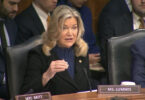On Friday the International Organization of Securities Commissions (IOSCO) published an update to its work plan, adding financial asset tokenization as a topic alongside artificial intelligence. The body is the global standards setter for securities.
The announcement didn’t say much more than that.
We’d observe two simultaneous drivers in the tokenization focus – incumbents and startups. On the one hand, the BIS is promoting its Unified Ledger concept that embraces tokenization and smart contracts, but not blockchain. Additionally, several central banks are progressing wholesale central bank digital currency (CBDC) initiatives, where one of the CBDC’s purposes is often to settle securities transactions. There are also sandboxes, such as the EU’s DLT Pilot Regime and the UK’s Digital Securities Sandbox (DSS).
Alongside these initiatives, several incumbent asset managers are issuing tokenized funds or exploring the topic.
Several asset managers issued funds on public blockchains, which overlaps with the second major driver. The cryptocurrency sector envisages asset tokenization as promoting the next wave of public blockchain adoption.
Regulators have long worried that the cryptocurrency sector will become more interconnected with traditional finance (TradFi) and transfer some of its volatility.
As a result, there’s already been some shifts from regulators. For example, the Basel Committee’s crypto-asset rules for banks initially considered all tokenized securities as likely low risk. Hence, the balance sheet risk treatment was similar to conventional securities. However, late last year it shifted its position, saying securities issued on public blockchains are higher risk. Hence, it plans to treat them in the same manner as cryptocurrencies.
While some view the Basel shift negatively, on the positive side, the DLT Pilot Regime and the UK’s DSS point to one area where regulations need changing. Today, many countries don’t recognize the native issuance of securities on a blockchain. Plus, they often require the use of a central securities depository (CSD). Changes in these two areas could smooth the transition into a tokenized world.
Other IOSCO crypto-asset activities
Meanwhile, last year IOSCO published its policy recommendations on cryptocurrencies and DeFi. In its updated work plan it added the task of monitoring the implementation of its recommendations for digital assets and decentralized finance (DeFi).






